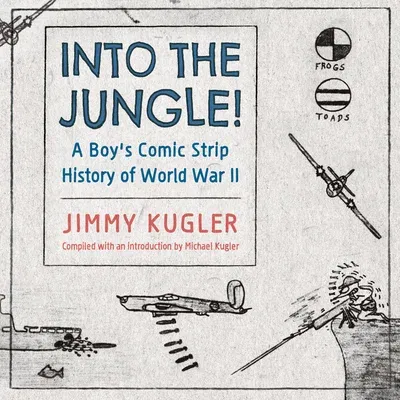Near the end of World War II and after, a small-town Nebraska youth,
Jimmy Kugler, drew more than a hundred double-sided sheets of comic
strip stories. Over half of these six-panel tales retold the Pacific War
as fought by "Frogs" and "Toads," humanoid creatures brutally committed
to a kill-or-be-killed struggle. The history of American youth depends
primarily on adult reminiscences of their own childhoods, adult
testimony to the lives of youth around them, or surmises based on at
best a few creative artifacts. The survival then of such a large
collection of adolescent comic strips from America's small-town Midwest
is remarkable.
Michael Kugler reproduces the never-before-published comics of his
father's adolescent imagination as a microhistory of American youth in
that formative era. Also included in Into the Jungle! A Boy's Comic
Strip History of World War II are the likely comic book models for
these stories and inspiration from news coverage in newspapers, radio,
movies, and newsreels. Kugler emphasizes how US propaganda intended to
inspire patriotic support for the war gave this young artist a license
for his imagined violence. In a context of progressive American
educational reform, these violent comic stories, often in settings
modeled on the artist's small Nebraska town, suggests a form of
adolescent rebellion against moral conventions consistent with comic
art's reputation for "outsider" or countercultural expressions. Kugler
also argues that these comics provide evidence for the transition in
American taste from war stories to the horror comics of the late 1940s
and early 1950s. Kugler's thorough analysis of his father's adolescent
art explains how a small-town boy from the plains distilled the popular
culture of his day for an imagined war he could fight on his audacious,
even shocking terms.

